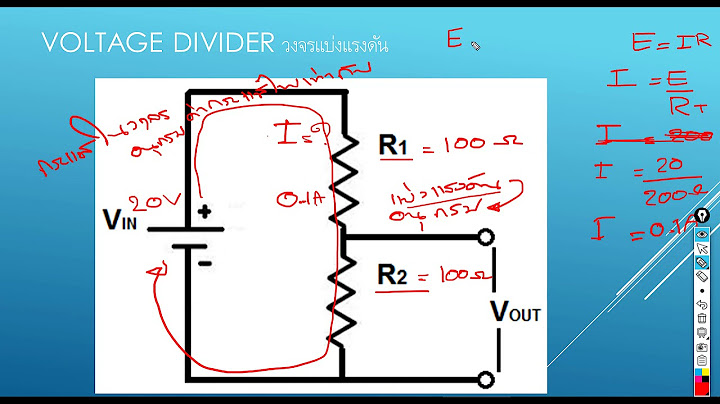Given my feelings about the first book, it seems unlikely that I would choose to read this one, and yet here we are, and I really can't say that this one was much better than the first, although to be fair, my perspective has changed a lot since reading the first one. I have to say it. This one is just as bougie as the first. The authors underestimate how many people struggle with basic survival (even employed people) and don't seem to understand privilege in the least. The book has a socially conservative tone that assumes a mostly white, mostly male, christian, and heteronormative world where no one experiences bias, glass ceilings, microaggressions, etc. These are profound problems in a book that assumes anyone, anywhere can change anything about their work life. It makes me think badly about Stanford, compared to other elite schools that are certainly more woke than where these guys are coming from. I am so frustrated by all of that. That said, some of their concept are useful. My favorite was BDO - best doable option - and I intend to introduce that one to colleagues who bemoan having to make imperfect choices and who cling to options that are purely theoretical. The what-do-you-make discussion was helpful as well. I did the exercise for that one with the sliders representing money, impact, and expression. Turns out, I have a very low need for expression, but I feel frustrated by what I'm doing in terms of impact...and I'm already working on that without needing this book to tell me to do that. The visual, however, was really satisfying to have. The brief discussion about StrengthsFinder was good too. It prompted me to revisit my results. Overall, not a book I'm going to recommend, even though it does have small bites that I found worthwhile. For people who have tons of resources and privilege, but who are lost AF, this book may have some insight. Also, I can't shake the feeling that a lot of the stories in it sound fake...  897 reviews60 followers January 3, 2023 HIGHLIGHTS: 1. Congruence: Designing your work and life. It comes down to making good choices, consistent with your compass, and what you value. - Point of impact: from personal to global. - Type of impact: renew - repair- sustain - support new-new. - Moneymaking, impact making, expression making. - Maximizing reality. - Strategy: Retreat. Review. Reflect. Reinforce. Train. - Millennials and Gen Z workers especially demand a work experience that is meaningful and that gives them a sense that they are having an impact on the world. - You need to ask for help. When you reach out to the world, it’s been our experience that the world reaches back. And that changes everything. - Telling a new story, especially to yourself, can be a powerful way to change your experience on the job. 2. “Good enough for now” is one of the big reframes because you’re changing your internal narrative. - Create relationships with people, not things – that’s one way you get off of the hedonic treadmill. - ACTION: Plan positive energy breaks at three-hour intervals every day. - You have no control over other people, and little control sometimes over your circumstances. When we design our work life, we begin by accepting what is, and then find small ways to redesign our circumstances. We get curious, talk to people, try stuff, and start telling a new story. In the process, we find ourselves more engaged and more energized. - The secret to “good enough for now” is to have a bias to action. Set the bar low. Clear it. Then do it again. - ACTION: Every two weeks once you’ve met your previous goal you make a small incremental change. If you fall behind, no problem just reset your goal and start over but no threat. Your brain needs to pay a penalty for messing up. 3. ACCOUNTABILITY: When we create accountability the likelihood of our meeting our commitment increases substantially. - You will have established a method you can rely on for making changes. - REFLECTION: what did I learn? What did I initiate? Who did I help? - ACTION: Learning, initiating, and helping. Try to do this daily, or at least every few days, and no less than once a week. - Continue this daily login for 3 to 4 weeks. - The “good work journal” can help you gain awareness of what’s working in your life and what’s not. Over time, these practices contribute to a sense of moving in the right direction. And when you get used to setting the bar low and making the small incremental adjustments that come from noticing what’s working, it all starts to add up to significant changes in your experience of work. 4. SMALL THINGS: Look for small things. Look out for what we call unlearning. Set the goal to initiate something new at work at least once a week. Do you do something in the service of others? Small interventions count. Small gestures build good karma. - To reflect is to think, ponder, or meditate on an idea or experience. Quiet time and focused energy to select ideas or experiences. - Savoring & Insight: Reflection is a powerful way to train your capacity for noticing your experience. Welcome to more for free. - ACTION: Make the micro goals each week easy. - Money and meaning are just two different measurements of what I value. - Most people care about both their success in making money and their success in making an impact. - Finding and maintaining the right combination supports them and living a meaningful life. - Dramatic stuff in a stuck situation includes our own old baggage: old wounds not yet fully healed, sensitivities we just can’t seem to dampen, and biases no one has talked us out of yet. - The best doable option: Formulate a list of actually available options, then pick the best one. - Gravity problems: It’s not a problem because there’s no effective action you can take, and if you can’t take action, it can’t be solved. - If you are careful about finding the right problem and you get good at reframing your problem in a way that gives you the creative freedom to prototype lots of solutions, you will have the best available chance at finding yourself in a job and life you enjoy. 5. REFRAME: Reframing problems is your go-to superpower. - Overwhelm: I chose my way into this and I can design my way out. - Do not let overwhelm turn into burnout. - Start prototyping small changes to your task list. You will discover that you have more agency than you think, and whether you have to ask for permission to try something or not, you are the initiator. - If you really want to get a lot of time and energy back, you should give away your most prized in high visibility activities. Those are the easiest ones to find takers, and giving them away frees up a lot of time. - If you can get your key partners, intimates, and collaborators to join you in temporarily embracing your hyper-overwhelm, things will go much more smoothly for everyone. - You are the designer and you are in control. - Less is more list: Make your less is more list of things to drop, delegate, or renegotiate. 6. CHANGE: - At work, you develop your autonomy by showing up in the work that you do and deciding to do it as well or better than is required. When you get in the habit of over-delivering on the job, good things start to happen. - Change your self-talk from doubtful to positive and tell that story out loud. Develop yourself in concert with your intrinsic motivation to be an autonomous and creative worker, and to collaborate with others. Work hard to gain Mastery in your field and focus on what you need to make your job meaningful. - To make change happen, you need to be the person who has that authority. 7. INFLUENCE: Influence that matters ask the people with the authority who are making decisions, often by providing an informed opinion on the pros and cons of the decision in question. - Influence is a form of power that acts upon authority. Authority is the power to make decisions. - Influence is the sum of the value you contribute and the recognition you get from contributing that value. Influence = value + recognition - Influence comes from a very legitimate place. It comes from the real value you create, strategically, and culturally aligned, for your organization. - Most influencers become influential because their advice and counsel can add value. You add value to the organization, meaning you help it be more successful, by being useful and doing great work. Is important that the value you add strategically align with the organization's direction and is recognized by people who can do something about it, the ones with the authority to make decisions. - Real influence comes from a repeat record of adding value and being recognized for it. Decision-makers need influencers because without them they’re left out on their own to figure out everything. - Be a savvy political observer and keep adding value that’s visible to the right influencers and authorities, something good will come of it. - A smart designer reframes her understanding of her organization to match this three-dimensional, moving system and works to increase her power and influence. - When do you understand that influence is making an impact on good decisions, and that causes change, you can start to see through the politics of decision-making and it all starts to make sense. - You understand the valuation process and how it acts on decisions. Once you start seeing these business situations more clearly, it doesn’t take long to realize how these new political insights put you in a position of power over your own work life. If you can get an alignment with the people who have power, and work on adding recognizable value, you will be engaging the political realities in a very healthy way. 8. AUTHORITY & INFLUENCE: Politics, and healthy organizations, is about making the organization run better. - Redesigning your job where you are: Align yourself with the organization's strategies and goals and make sure that your value aligns with your own compass, and we predict good things will happen. - Prototype doing more of it in ways that make it easy for your employer to like what you’re doing. If it works, just keep building your way forward to a more joyful job. - Grad school is the solution if and only if you have identified the right problem to solve. Please have a bunch of prototype conversations, and if you prototype experiences you can be more certain that grad school will make a difference in your future. - Before you quit, have that conversation with your boss. Ask one simple question. “What am I doing wrong?” - What you choose to do in life is what gives your life meaning and a purpose. So make it a point to quit with a purpose. - Make the connection tangible and touch base: a handwritten note, thanking someone for their time or being helpful, is always appreciated. 9. QUITTING: 2 to 6 months on this project to quit. Do you want to always be building a professional reputation in-network, both of which travel with you wherever you go? - be clear and concise and emphasize the positives about your future challenges. Do you want to tell a consistent and positive story? - Create a job description that includes everything you do, including the stuff that you were supposed to do and the stuff that you actually do. Make it a comprehensive list of all your responsibilities. - Leave the campsite better than you found it: make a list of the people you work with and who work for you. Go to their boss and praise their accomplishments. Be selfless and give away any political or social capital you have. - Quick reference manual: regular meetings, activities, and reports. Key colleagues and helpers. List current key issues, and problems to be addressed. List all problems that could resurface if not maintained. Procedures for regular functions of the job. Personal summary edge of each of your direct reports, including what makes them a great employee. 10. MOVING ON: Design is always a work in progress. - The most effective way we know to pursue and learn new job opportunities starts with prototype conversations, rooted in your curiosity, with professionals in your area of current interest. - Be a sincerely curious person and someone not looking for a job, you can become an insider through connections built by getting the story. - When you’re out there “getting the story”, you are just a curious person who’s talking to interesting people doing interesting things in the field of work you’re interested in. You’re not a job seeker yet, which is why you are such an easy person to talk to you. - Make a “take it with me” inventory: list all the assets you’ve gained during your employment in your current job learning‘s peak experiences, hard challenges, people relationships personal growth. - Prototyping is the lowest way to get curious, try stuff, and take control of your work life. - When you become a life designer, you don’t just accept the default reality of what’s happening to you. You build your way forward. - Come up with a better way to tell people about what you do. Let your service or product be delightful and extraordinary. 250 words. - When you have designed your customer's experience to be extraordinary and delightful, you find yourself working with people who are happy to work with you. - Delighting your clients is a never-ending design process, but it’s fun to do. - Being creative and having good social and emotional interpersonal skills are at the heart of the new creative economy, and the consultants and entrepreneurs who will succeed will be masters of soft skills. - With disengagement at work at epidemic proportions, our work culture is not working, and the reason is that our organizations are filled with dysfunctional beliefs. - Work is wasted or lacking in purpose. We have real problems to solve and real challenges to face, and we need to transform our work culture so that it works for individuals, organizations, and societies. By transforming your beliefs about work and sharing these reframes with others, you are contributing to far greater meaning and impact. - The one thing we know with absolute certainty is this: life’s too short to be disengaged at work. And life is too precious to be disengaged at life. “Wisdom Dates”: Designingyourlife.com Freelancer.com upwork.com. happiness  129 reviews10 followers May 19, 2020 So white - so cis - so male! So ableist! Literally take what’s useful and ditch the rest.  221 reviews13 followers April 28, 2020 Disclaimer: I am a certified DYL coach and work with the material in the first DYL book frequently. Even with an insiders view, I found most of the content here new, relevant a refreshing. The two most useful chapters are "Power and Politics" and "Being Your Own Boss". As with the original DYL there are plenty (seventeen, I think) introspective exercises to help push one forward, some are variations of DYL (Good Work journal is an extension of Good Time Journal, but more actionable). The Maker Mix is very simple useful tool and really deserved to be in the first book. I will use this material in coaching, but my two part critique is where coaching must supplement: 1) Some of the examples are weak and simply don't do a good job of supporting the author's premises or suggestions and 2) the bits about the 'hidden job market' are certainly true, but they re-used the same example from DYL to illustrate job search and this example, in both books, it simply inadequate for *most* people to use as guidance on job search. biz-career  202 reviews13 followers January 15, 2021 Similar to the authors' first book, Designing Your Work Life is a quick read with familiar concepts and digestible advice with a greater focus on one's current job. Nothing in this proved groundbreaking to me personally, but the book serves as a helpful reinforcement for actually setting out to do the things one needs to do in order to find one's ideal life/work 'design'.  113 reviews January 24, 2021 I liked how easy to read and how actionable this book was. It's not an exhaustive list of ways to improve your work life and some of the things suggested here might not even work for some people (maybe not even one of them), but it's a very good start. I think that this book is useful to coaches, career counselors, or just regular people trying to improve their work.  882 reviews17 followers September 27, 2020 This is a great read for those who may need reassurance and encouragement for where they are in their career now, emphasis on now. A key point is to learn to design your work, and you can have money and meaning. Overall, the take-away is that motivation is life is intrinsic, not extrinsic. What a great reminder at a time, especially for teachers, struggling through an ever-changing work environment. I recognize that this book isn't really written for educators. It leans more toward entrepreneurs and business careers, urging individuals to identify their influence and leverage it. There's a push to design your work life even if you are self-employed. I wonder, where does influence come into play for the field of education? It certainly can't be Teacher Pay Teachers or similar avenues. How can educators design their work life with little decision-making power? The assumption is, Who wouldn't want a work life of their dreams? My Devil's advocate thought/reminder is that not all people dream of working. I enjoyed the concept that problem-finding is just as important as problem-solving. I tend to find problems. I also tend to find solutions. I'm leery of those who avoid finding problems for sake of having to be the one to solve them. All in all, one shouldn't quit their job until they've tried to redesign it. That's the message that pushed my rating to 4 stars. If you do decide to quit, quit well. Set yourself up for later success. blinkist  730 reviews August 21, 2020 I got this out of the library because I found Burnett and Evans's earlier book helpful in imagining how I might like my life to look as I moved toward retirement. Because I am pretty happy at how things are working for me, this book is not essential for me. But if I was younger, and particularly if I was thinking about changing jobs, the exercises and strategies contained here would be very helpful. I like the ideas of reframing and curiosity around being bored or feeling out of place: What did I learn today? What did I initiate? Who did I help? Likewise, considering money, impact, and expression as each important rather than getting stuck on one or another. And remembering that autonomy, relatedness, and competence all play a part in work satisfaction. There are full chapters on staying, quitting, moving on, and being your own boss, all with exercises and strategies. An easy read but very practical for those thinking about how to thrive at work in these changing days. non-fiction  148 reviews4 followers May 12, 2023 I found this book very useful as someone who isn’t quite sure what I enjoy at work and what I want out of a job. The exercises and frameworks were helpful for me to articulate and map out things I like and haven’t liked about different roles. I liked the visuals and the weight put on impact, money and expression. Sometimes it was hard to tell if I was applying the frameworks correctly and the examples seemed pretty cut and dry compared to my life but overall I found it a very useful guide. Imo the Covid add didn’t do anything for me in our year 2023 so I skimmed the last 4 or so chapters but the first few chapters were what I wanted anyways.  900 reviews March 24, 2020 As a follow-up to their first book, I found this book to be more more "practical" and career oriented. As a career coach, it was filled with psychology and techniques that I've used over the years with great success. I'm glad to have the resource to hopefully better articulate some ideas for actions my clients can take. I don't think I learned anything new here. I have read the full books of some of the psychologists quoted and employed many of these concepts. But I think for the average worker-this could be a helpful tool. I also liked that the examples shared in the book weren't exclusively corporate, but showcase how people from a variety of differnt jobs could use these tools. It was also interesting that the authors used a lot of their own experiences when illustrating a point. I don't remember that as much from the first book. I think it lent credibility to the points they were trying to illustrate--espeically becuse you can ask, what qualifies them to give this advice/provide these tools. And by sharing their stories--you see that their qualifications come from their experience. business-work-productivity  71 reviews1 follower September 26, 2020 A lot of times in life, you'll hear people say "Do what you love!", "Follow your heart", etc. A vast majority of us know that it doesn't work for everyone. And it is practically impossible to radically change your your lifestyle like that for a majority of people due to several reasons and personal commitments just being one of them. The author reminds us that instead of looking at your work-life or career this way, why not think of redesigning your career to gain more out of it? A lot of us often get to a point in our career, wondering are we there yet? This apparently is because we are unhappy that we aren't fulfilling our ambitions through our current job. And then we get on to the hedonic treadmill of wanting more of things, whether it is salary or challenge or whatever you think motivates you. And you end up, switching jobs, cities, roles, what not; without ever trying to find out why? The authors call this person a non-life-designer. Whereas a life-designer is one who lives with intention, one who realises that no matter where they are, they could make an impact! Designing here, would mean, reframing your outlook/mindset. Understanding what works well at the moment, and finding out what you enjoy most where you are. We often overlook these factors because as humans, we tend to focus more on the negatives and less on the positives. This exercise is like a retrospective, you do regularly and remind yourself of the goods, the bads and helps you identify what you can fix or change to get what you want. An Agile approach to life :D By doing this you may spot ways to redesign your current situation and discover the unseen/unobvious, which would help you tackle the problem better. Some people often come to the question - do you want money or meaning? Apparently, we don't have to pick one. The authors compare this to a music producer using a mixing board. The dials are the varioud factors that affect your career. You could turn just one dial up and the others low. But often times, good music comes from a balance of all the factors, not one. So the authors make the point that if money, creativity and impact were factors that are important for a career, then you really need a balance of them all and not just one. The key is to find the right mix. For most of us, the way we find this is through trial and error. The authors also takes us through an exampel of a lady who is unhappy with her job and looks to move on to another company. The real problem though is the feeling of under-appreciation because her boss is a bit of a jerk. By choosing to move to another job, she is actually solving the wrong problem. What the authors try to prove through this example is that quite often we try to solve a problem that isn't the real problem at all. Getting trapped into a situation like this often leads to us jumping from job to job aimlessly. In such a case, one can't change their boss, but what one can do is find other sources of appreciation. This can be done by looking at her other stakeholders. Being unable to find motivation is often the reason of unhappiness. The authors clarify that motivation is intrinsic, i.e. extremely important and a basic characteristic of a person or thing. Thus you have to find it within. The author suggests working on your Career ARC, Autonomy, Relatedness and Competence to achieve motivation. Autonomy is the freedom to control what you do and when and how you do. Relatedness is the connections, working together with a group of people energises everyone. Competence is the skill at doing something. If you examine closely you'll find why you enjoy a certain thing at work, it is probably because you do it really well. Taking care of these will take care of motivation for you. The most interesting bit to me is the part about influence. There are two types of power that you can observe around you. Authoritative and Influential. Those who can influence do not need to be in an authoritive position. They can influence things in many ways. Influence cuts across hierarchy. Now obviously, you'd question how to be an influencer. In order to get there, you need to add value, offer advice, make suggestions, make your ideas get heard and take ownership to ensure you get recognition. The more value you add, the more you'll be recognised and likelihood of authorities seeking your input will increase. Influence is the leverage that you probably overlook the most. This process of designing one's work life doesn't happen over night. Hence, give it a shot before you try to move on. Re-frame your situation, re-enlist (work in collaboration) yourself in projects, remodel the role, go above and beyond, extend the scope of your job description. or Relaunch your job, find a different line of work, from underwriting to coding or vice-versa or finance to sales etc. Now if after all this, you still feel you could probably do better beyond the boundaries of your company, then think of moving on. And be sure to quit well and not burn bridges. This helps retain connections and build a good network. Ensure you are remembered by leaving your project in a good state and not in a mess. Find positive reasons to quit, instead of choosing to say "I left because I couldn't stand my boss". Now all the things mentioned earlier also applies to self-employment too. Remind yourself why you chose the path you did, reframe, re-enlist and relaunch. The point is you don't have to change jobs to create a dramatic change in your work life. By applying the principles of good design to your career, you'll be able to reframe, reshape the job you have into the job you want. This is really an eye-opener for me as I always believed, moving on, is always better.  18 reviews January 6, 2022 What you're seeking is seeking you! This book guided me during a time in which I was not sure whether to stay or leave a past employer. I was still unsure if I was a mismatch for the role or a mismatch for the organization. Although reading this book didn't give me answers right a way, it encouraged me to reflect more deeply on what I want out of my professional life. I loved "Designing Your Life," and this sequel was no different. Within five months of completing this book, I got offered a job that aligned more to my future aspirations. I'm not sure if I would have the confidence to take the leap of faith without this text. I definitely recommend this book to anyone feeling stuck in their professional life and are not sure of their next move! personal-development  170 reviews2 followers March 2, 2021 This reinforced a lot of things that I've been learning lately and I appreciated the straightforwardness of this book. I think it hit with me because I am in the mindset of finding a solution now and not just bemoaning my situation. Which I am definitely guilty of. I like the paradigm shift of "good enough for now" and a realistic take that people can't just up and quit their job. They handle generational shifts and differences in generations of workers really friendly. And I love that. I don't think this book works if you're primarily gig working. Easy listen (another solid Audiobook experience) and good actionable steps. I will come back to this one.  206 reviews November 23, 2021 Not a lot ideas that are new-to-me in this book. For some it's important to be given permission or a push to take charge of their lives -- and to actively chose a mindset with which to interact with the world. As others have written, the examples and the frames in this book are cis-white male centered, and it's impossible to read around that.  162 reviews August 8, 2020 While I liked the ideas around reframing dysfunctional beliefs and using design thinking, most of the 'real life' examples were way too unrealistic (in what utopian world does a manager do half the things mentioned in this book?) and therefore left me annoyed rather than inspired.  225 reviews7 followers July 21, 2021 This book will certainly contribute to my work as a career coach. While the book was a bit repetitive and long-winded at times, there were some nuggets I took note of to take with me. The activities and ideas that seem likely to have the most cogency in my work include: the job burnout reflection questions, how to discern whether you're developing a passion, how to quit well, questions for leaders for developing staff, good reflection frameworks for work, and how to "try stuff" and "get curious" when you're ready to switch to something else.  35 reviews1 follower December 4, 2021 Such a good book for designers about to enter the workforce. September 21, 2022 Could have been a single page recommending that anyone simply apply “good enough for now” to any situation.  1,322 reviews33 followers May 16, 2020 Fantastic book! Insightful with hands on examples of what you need to do to reframe your mindset and either make the best of your current situation or find a way to design your way out of it.  96 reviews December 17, 2022 While some of the book is aimed at those in their early career, the design thinking still, applies to any stage. Employee or business owner, think about your skill sets and the work you enjoy, how do,you get more of THAT and outsource, delegate the soul crushing parts. Interesting to see how the incorporated the pandemic into design thinking about changing the nature of work. Useful exercises to live a more intentional professional life. December 7, 2020 A good read if you're feeling in a rut in your current job and need a reframe.  230 reviews84 followers March 16, 2021 Probably helpful to some people looking for career advice, but the approach is privileged. I love the chapter about quitting well, but hate the chapter at the end about outsourcing your work.  119 reviews1 follower April 22, 2022 Really enjoyed the book. I listened to the audiobook, so will have to go back and work through more of the items on the PDF. Overall, lots of good advice around how to improve your work experience.  1,002 reviews31 followers January 13, 2021 First book of the year. Good ideas. Implementable plan. And an easy read.  20 reviews August 11, 2021 Would treat this more as a reference book to come back to at certain chapters in life but it served me well in decision making January 29, 2023 LEGACY TOPIC FACTS READABILITY TAKEAWAY 社畜一词来自日本,highlight的7th Day Reflection Exercise 也可以加入实践。  Author 22 books36 followers July 20, 2022 Dude, nah. Our two authors are Stanford professors who run a posh class for posh students about how to live a posh life. The idea is to problem solve in the way a designer does, but the problems are conflicts in your working condition/situation. So, they want to talk about Lateral Thinking, but they don’t have the vocabulary for it. Here is an excerpt that I will paraphrase: “You have to balance your money and your meaning and your time. For example, I was making eight times as much as you, and I decided I wanted to be a professor at a college without going through the shitty, kafkaesque hiring process, and I took a pay cut, now only making four times what you make, because it was more meaningful and I got to have more time off. But my wife negotiated at her workplace and made up the difference of what I was making.” Another: “Your boss isn’t a shit. Let’s reframe that. Okay, reframe again. Okay, one more time. See? You love your boss.” “Blah blah Martin Seligman, blah blah mihaly csikszentmihalyi, blah blah Angela Duckworth, blah blah Cheryl Dweck.” Yes, these folks are on the outer rim of the Penn Positive psychology crew, where every professor gets a book deal through their excellent connections and they coin a little phrase that sounds applicable. Now, I’ve heard great things about their first book, “Design Your Life,” and I imagine that this second book was the next part of their same contract, so they recycled a lot of things that they’ve read from the aforementioned researchers, but with the words “design thinking” thrown in a lot. I don’t want to discourage anyone from liking this book; we are different people, you and I. But it is hard to listen to someone wax on about “workplace issues” when they can’t fathom not being able to make a great living doing something they’re passionate about. Every anecdote is about someone who aces the interview, who stays late at work, and who then betters their life by outsourcing some of their tasks until their job is awesome and they’re making more money and they don’t need to work but half the hours, by choice, because travel is important to them. OK 1,379 reviews33 followers December 2, 2021 could have gone 3 stars if i were in a more generous mood today. It's ok. I get a bit bored of material presented in this structure -- (a) ideas about the topic of the chapter (rearranging your job, offloading excessive tasks, finding another job within same company, quitting, starting your own business, whatever), (b) anecdotes depicting some student or junior colleague who got this advice from them and subsequently prospered, (c) homework/worksheets on how you can do it too. If i ran the world (optimistic aspiration for my next effort to design my work life) I'd cut out all the homework, which generally followed in an obvious manner from what they'd said you should do. Might also cut the anecdotes, which tended toward the implausible -- thinking particularly of the person who's about to quit a job because their boss is a jerk, but when they instead go ask the boss "what am I doing wrong?" the boss says essentially "nothing. it's my problem. family stress. Sorry i took it out on you". Maybe i've read too many Blondie comics (would love to see Dagwood try this on Mr. Dithers), but I don't imagine a high percentage of these interactions going so well in regular life. two final random reactions: 1. loved the bit about "quitting well" including suggestion to write up a manual of tips/procedures/contacts for your successor [the whole book, as many goodreads reviewers point out, is very white collar -- not sure when i left my job cleaning other college students' bathrooms that the supervisors really would have wanted me to jot down my thoughts on floor mopping techniques]. The whole scorched-earth "i'm outta here!" scenario for leaving a bad job is much more gratifying in imagination than in reality. 2. The advice about finding a new job that may well not be publicly advertised amounts to "do informational interviews with people in that field", which can be a good idea, but giving it different names like "'get the story' meeting" and "prototype conversation" didn't make it any better or more novel, and the repeated statement that you should not mention you are looking for work (they'll be thrilled to talk about themselves!) seemed a bit ridiculous. Being an old person, I feel qualified to tell people considering using this method -- we know you're looking for work. And that's fine. no need to BS about it.  145 reviews3 followers September 9, 2022 เล่มนี้เขียนโดย Bill Burnett และ Dave Evans สองกูรูด้าน Design Thinking จากมหาวิทยาลัยสแตนฟอร์ด ผู้เขียนหนังสือชื่อ Designing Your Life คู่มือออกแบบชีวิตที่โด่งดังระดับโลก ซึ่งเล่มนี้ช่วยแนะแนวทางให้หลายคนที่อยู่ในช่วงเวลาหัวเลี้ยวหัวต่อ ช่วงเวลาที่ต้องตัดสินใจ ว่าจะไปทางไหนดีกับชีวิต ถ้าเล่มแรกเกี่ยวข้องกับการจินตนาการ เล่มนี้ก็คงจะเป็นการทำจินตนาการให้เป็นจริง เราทุกคนต่างต้องการใช้ชีวิตให้มีความหมายและสร้างผลกระทบอะไรบางอย่างทิ้งไว้ให้โลก ซึ่งสิ่งเหล่านี้มักจะเกิดขึ้นเมื่อเราทำงาน ทำให้การออกแบบชีวิตเรื่องงานจึงเป็นสิ่งสำคัญ คนที่มีค��ามสุขกับการทำงาน ได้ทำงานที่รักจริงๆนั้น มีจำนวนน้อยมาก คนส่วนใหญ่จึงตกที่นั่งเดียวกัน คือทำงานเพราะต้องทำ เพื่อหาเลี้ยงชีพ แต่เราจะมีวิธีการออกแบบงานที่ใช่สำหรับเราได้อย่างไร มาหาคำตอบได้ในเล่มนี้กัน -- คนทำงานก็มักจะเจอปัญหาคลาสสิกคล้ายกัน เช่น คิดว่าที่ทำงานที่นี่ไม่เหมาะกับตัวเอง คิดว่าตัวเองเป็นแค่ฟันเฟืองเล็กๆไม่มีค่าอะไร บางคนถึงขึ้นค��ดว่า นี่ไม่ใช่บริษัทของฉัน จึงทำให้ไม่มีใจผูกพันกับงาน ซ้ำร้ายบางคนถึงกับเกลียดงานที่ทำด้วยซ้ำ แต่คิดเองว่าไม่มีทางเลือกที่ดีกว่านี้จึงต้องทนทำต่อไป |

กระทู้ที่เกี่ยวข้อง
การโฆษณา
ข่าวล่าสุด
2024 Fate stay night unlimited blade works ทำไม archer รอด
4 เดือนs ที่ผ่านมา . โดย LaboriousCondominiumผู้มีส่วนร่วม
การโฆษณา
ผู้มีอำนาจ
การโฆษณา
ถูกกฎหมาย
ช่วย

ลิขสิทธิ์ © 2024 th.ketiadaan Inc.




























